Children may find it intriguing to discover the underlying reasons for the diverse colors that stars emit in the night sky. There are several factors that contribute to this phenomenon, including the number of visible stars in the sky, the refraction of light in the Earth’s atmosphere, and the Hubble Telescope.
In this article, we will explain why stars twinkle in different colors using simple language that children can understand. Both children and their parents will find this information valuable.
For young children and those who are curious, it may be fascinating to discover why twinkling stars appear so beautiful in the sky. What is the reason behind it? If we concentrate our attention on a specific star, we will notice that it sparkles. In order to explain this phenomenon to kids, parents or teachers at school should delve into the science and remember the term “stellar scintillation” (which refers to the flickering effect). Even without the aid of technology, we can distinguish up to 6,000 stars.
Children should understand that stars twinkle because we observe them through an atmosphere where the air is constantly in motion. This movement causes the light to refract (bend) in various directions, resulting in these shimmering appearances.

In order to provide a comprehensive explanation for kids regarding the phenomenon of stars twinkling, it is important to mention that the color of the twinkling can vary. The light itself encompasses the entire spectrum (red, orange, yellow, green, blue, indigo, and violet). It reaches us in the form of waves with different frequencies, where each frequency corresponds to a specific color. When the light enters the atmosphere and undergoes a high angle of refraction, its speed changes, resulting in the twinkling appearing as different colors. This can be demonstrated through a simple experiment using a prism, where the light will refract and create a rainbow.
Then, the younger ones might question why the planets don’t shimmer. This is because they are located closer to us. Stars, on the other hand, are positioned far away and their light has to travel a great distance. Additionally, planets do not emit their own light but rather reflect the sunlight.
Children should also be aware that the closer stars are to the horizon, the more they twinkle. This phenomenon occurs due to the thicker atmosphere in these areas. However, if we were in space, we would not observe any flickering as light is not distorted. This is precisely why the Hubble Space Telescope plays a crucial role. It is already situated in space and can study celestial objects without any interference.
Earth-based telescopes have the ability to observe stars without the phenomenon of twinkling. This can be achieved through the use of intricate moving mirrors that work to concentrate light into a consistent beam, minimizing the impact of atmospheric turbulence. This technology, known as adaptive optics, enhances the clarity of star observations. The reason behind the twinkling of stars is now clear. To gain a better understanding of the description and characterization of celestial objects, you can explore our collection of photos, videos, drawings, and interactive models available online.
The night sky, adorned with stars, has always evoked a sense of wonder and awe. In such moments, earthly matters often fade away, and one can’t help but feel like a small part of the vast universe, connected to something greater than just our planet Earth.
Have you ever wondered why stars twinkle? It’s a question that many people have pondered. It’s a truly breathtaking sight, especially after a rain shower, when the stars glisten with a multitude of colors. Sometimes, it’s difficult to come up with a simple answer to such an innocent question.
The answer lies in the air
The twinkling of stars is a direct result of the air’s fluctuations. The Earth’s atmosphere is not uniform, causing air masses to move at different speeds and create various currents and streams with distinct temperature properties, density, and other characteristics. As a result, starlight passing through the atmosphere can be refracted in countless ways, giving rise to the illusion of this enchanting twinkling phenomenon.
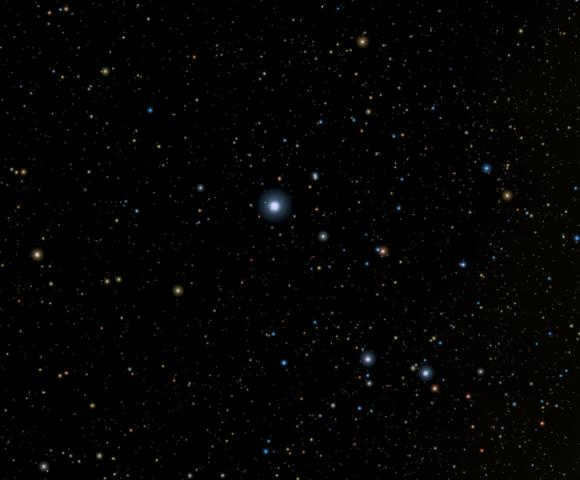
Glimmering celestial body
A glimmering celestial body in the firmament resembles the luminous spectacle of a bustling metropolis when observed from a distance. Furthermore, if the atmosphere is saturated with moisture, the radiance will alter its trajectory and refract, shimmering with a myriad of hues reminiscent of the enchanting rainbow. The explanation for the phenomenon of why stars twinkle, it transpires, is exceedingly straightforward. When a star nears the horizon, refraction becomes even more pronounced due to the denseness of the atmospheric layer, thereby enhancing the twinkling phenomenon to a greater degree.
Stars exhibit a wide range of physical characteristics that set them apart from planets, resulting in their unique patterns of illumination. Even on a picturesque night adorned with countless twinkling stars, it’s easy to distinguish the steady, unwavering light emanating from the planets within our solar system. Unlike stars, the light emitted by planets such as the Moon or the Sun remains constant without any flickering. This distinction is perceptible even without the aid of a highly precise microscope.
Why does this phenomenon occur? By considering the factors influencing the light emitted by stars and planets, we can deduce that stars twinkle on a point-by-point basis, whereas planets exhibit the same twinkling effect, but due to the presence of numerous points of light, an illusion of consistent illumination is created. It all boils down to a matter of quantity.
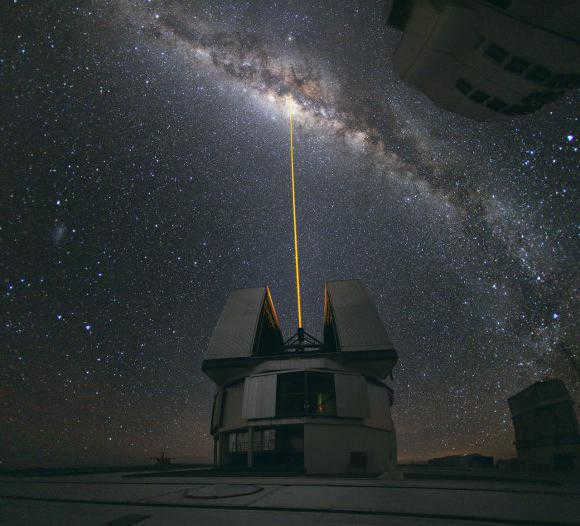
Diverse shining celestial bodies
When observing the night sky, stars may appear similar to the naked eye, varying only in their brightness. However, upon closer inspection, it becomes evident that stars can differ in color as well. This phenomenon is particularly noticeable among the largest and brightest stars. For instance, Arcturus and Aldebaran exhibit an orange hue, while Betelgeuse and Antares radiate a red glow. Sirius and Vega, on the other hand, emit a white light, whereas Spica and Regulus possess a bluish tinge. Notably, there are also yellow giants like Capella and
Astronomers link the hue of stars to their temperature. Stars with surface temperatures up to 4 thousand degrees are classified as relatively cold and appear red, while the hottest stars, with temperatures ranging from 10-30 thousand degrees Celsius, are referred to as blue-white. The reason why stars twinkle becomes evident with these extreme temperature ranges.
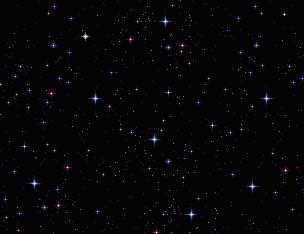
What causes stars to twinkle and do they actually twinkle? The answer to this question depends on one’s perspective. If we associate this phenomenon with refraction, then it can be referred to as twinkling. However, it is important to note that stars themselves do not emit light; rather, this impression is created for viewers observing from Earth. If we were to observe this scene from outer space, there would be no flickering. According to astronauts, stars shine brightly and uniformly, only appearing to twinkle to those observing from Earth.
Have you ever noticed the tranquil and serene nature of the starry sky? And if you take a moment to gaze into it, you may find yourself in a state of blissful awe.
What causes the twinkling of starlight?
Stars, which are enormous celestial bodies, appear as tiny dots to us because they are located many light years away from Earth. These celestial bodies are composed of gas and have a spherical shape with uneven edges.
Deep inside a star, there is a process called thermonuclear reaction that generates heat and causes the gas within the star to emit light. This emitted radiation is incredibly powerful and can travel vast distances across the cosmos, allowing us to see it.
However, the actual light emitted by a star is relatively steady and constant. The perception of twinkling only occurs here on Earth. As the rays of starlight pass through our atmosphere, they encounter a barrier that creates an illusion of flickering.
The atmosphere is characterized by its heterogeneity, with its various layers exhibiting different temperatures and densities. This variance in density causes light to refract differently, resulting in the sparkling appearance of stars. This phenomenon is simply an aesthetically pleasing optical effect.
However, if one were to observe the stars from a spacecraft, the Moon, or another planet devoid of an atmosphere, the glow of the stars would appear smooth and continuous. In order to minimize the disruptive blinking caused by atmospheric layers, scientific observatories strive to be situated at higher elevations, such as mountains, where the density of the atmosphere is reduced.
Why do stars emit different colors?
Anyone who enjoys stargazing has likely noticed that the night sky not only twinkles, but also displays a mesmerizing array of colors. Stars can appear blue, red, white, or yellowish, and it is even possible for the same star to appear different colors to different observers.
This captivating phenomenon is the result of several factors aligning perfectly.
The correlation between the temperature and age of a star and its color
Stars exhibit a wide range of colors, which can be attributed to the varying intensity and temperature of the thermonuclear reaction within them. The color of a star tends to become closer to white or blue as its temperature increases.
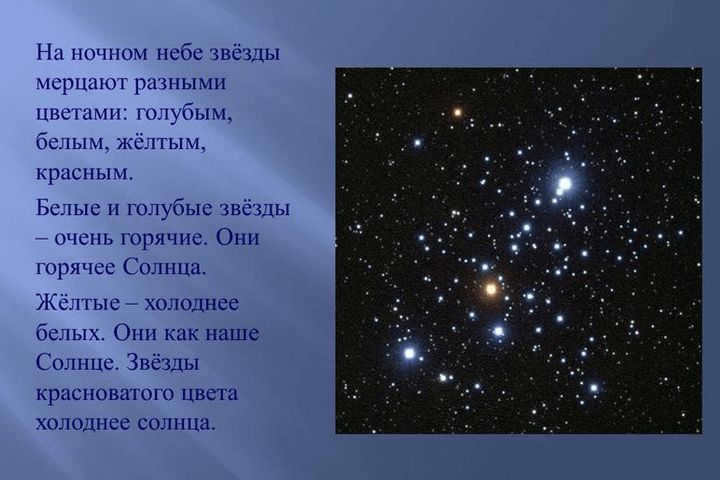
The lowest temperature of stars is represented by the color red. This phenomenon of color transformation can be observed when heating metal. As the temperature rises, the color of the metal changes from red to white, reaching its maximum temperature.
Astronomers are able to determine the age of these celestial bodies based on their temperature and color. The lifespan of a star is limited. It begins with an explosion, during which the star emits the highest temperature and a white or blue glow.
As the intensity of reactions gradually decreases, the color of the star changes and it emits a yellowish glow, eventually transitioning to red hues towards the end of its cycle. The color of our star, the Sun, which is the main source of life on Earth, is currently a light yellow. In other words, it is a middle-aged “lady” in her prime.
“Distorted view” of the atmosphere
Furthermore, our atmosphere is not only varied in density, but also in constant motion. Within it, there are perpetual movements, the shifting of layers, and various swirling air masses. As a result, it not only causes intermittent flashes of light, but also scatters and refracts the luminosity, creating a spectrum of colors. It’s akin to the effects of a curved lens, with the curvature constantly changing. It can be said that we observe the vibrant stars in the sky through a vast, ever-moving “lens”.
Why do planets not twinkle?
Unlike stars, planets do not mysteriously flicker when observed from space. Instead, they emit a steady and uniform glow.
One of the reasons why planets do not twinkle is because of their shape. Unlike stars, which appear as points of light, planets are seen as luminous disks with clearly defined edges. This is because planets are not gaseous like stars, but rather dense objects, possibly extinguished stars.
So where does the light come from? Planets do not generate their own light; instead, they reflect the light from a nearby star, such as the Sun in our solar system. Additionally, planets are much closer to Earth’s surface compared to stars. These two factors, the reflection of light and proximity to Earth, result in planets being observed without flickering and appearing larger due to the atmospheric “lens”.
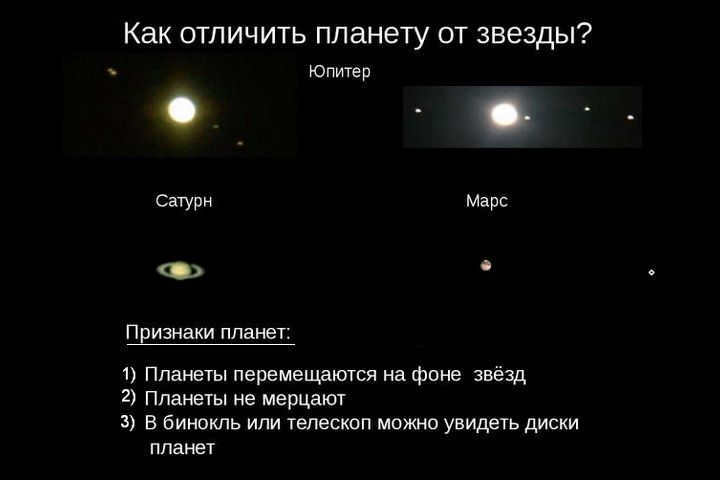
Which planets can be observed from Earth without a telescope?
The planets that can be observed without the need for special instruments are Venus and Jupiter. Venus, being the brightest, is highly visible during dawn and dusk, while Jupiter appears slightly fainter. Both planets exhibit a yellow hue.
Occasionally, it is also possible to catch a glimpse of Mars, which appears as a small, glowing red disc in the sky. However, the other planets in our solar system can only be observed using powerful technology.
Nevertheless, to marvel at the distant yet luminous stars, all one needs is clear weather. Their twinkling is particularly breathtaking and prominent on frosty nights or after rainfall.
Similar to brightness, the phenomenon of twinkling is not an inherent characteristic of the stars themselves; it is actually generated by the earth’s atmosphere, which the stars’ rays must traverse before reaching our eyes. If we were to ascend above the turbulent gaseous layer that obstructs our view of the cosmos, we would no longer perceive the twinkling of the stars; instead, they would emit a steady, tranquil glow.
The reason behind this twinkling effect is the same as the one that causes distant objects to waver when the ground becomes intensely heated by the sun on hot, muggy days.
Starlight must pass through a non-uniform medium consisting of layers of gas with varying temperatures, densities, and refractive indices. In this kind of atmosphere, it is as if there are numerous optical prisms, convex and concave lenses constantly changing their positions. The light rays experience multiple deviations from their original path, sometimes becoming concentrated and sometimes scattered. This is why we often see fluctuations in the brightness of stars. Additionally, refraction also causes the scattering of different colors, resulting in changes in the star’s coloration.
"According to the famous Soviet astronomer G. A. Tikhov, who studied the phenomenon of flickering, there are techniques to calculate the number of color changes that occur in a flickering star within a specific timeframe. It has been discovered that these changes occur at an incredibly rapid pace, with the number of changes varying from a few dozen to over a hundred per second in different cases. This can be easily demonstrated by performing a simple experiment. By using binoculars and rapidly rotating the objective end, a bright star will transform into a ring consisting of multiple individual stars, each displaying different colors. Slower flickering or faster movements of the binoculars will cause this ring to fragment into multicolored arcs of varying lengths instead of individual stars".
To clarify why stars and planets differ in their luminosity, we must consider their proximity to us. Stars are distant, appearing as mere points of light. However, planets are much closer, allowing us to perceive them as luminous circles or disks. Despite their small angular dimensions, the intense brightness of planets obscures these dimensions from our view.
Although each individual point within a planet’s circle may flicker, these fluctuations occur independently and at various moments in time. Consequently, the changes in brightness and color cancel each other out, resulting in a consistent overall intensity of light. This harmonious balance explains the steady, non-flickering radiance of planets.
Have you ever observed the way the horizontal lines at the base of a tiled swimming pool seem to oscillate from one side to another? This occurrence takes place due to the refraction of light rays reflected from the pool’s base by the water in the pool. Likewise, stars shimmer due to atmospheric turbulence on Earth. Before reaching the viewer’s eye, light from stars must traverse multiple kilometers of the Earth’s atmosphere. In this case, the Earth’s atmosphere functions in a similar manner to the water in a swimming pool.
What causes stars to twinkle? The twinkling of stars is influenced by the temperature of the air. As we ascend, the temperature of the air generally decreases by 6.5 ° C per kilometer. This is why it tends to be colder in mountainous regions. The Earth’s atmosphere is composed of multiple distinct layers, each with its own temperature and density. Warmer air refracts light rays to a lesser extent, while cooler air distorts them more due to the greater distance between air molecules, resulting in less light scattering.
Our atmosphere contains a significant amount of turbulent air currents and vortices. These factors, combined with temperature fluctuations in the atmosphere, act as lenses and prisms that cause the incoming starlight to oscillate laterally multiple times per second. This oscillation leads to variations in brightness and position.
The higher the elevation for observing stars, the more favorable the conditions.
Observatories are situated on mountain tops to minimize the twinkle effect caused by the layers of air. As you ascend higher, the air becomes thinner, reducing the likelihood of the twinkle effect. Scientists are currently conducting experiments to modify the optics of telescopes in order to compensate for the flicker effect. This will enable astronomers to observe stars with much greater clarity on Earth.
An interesting observation is that stars closer to the horizon twinkle more due to the higher saturation of the atmosphere between the observer and the stars on the horizon compared to the atmosphere between the observer and the stars directly overhead.
To achieve crisp images of the universe, telescopes are launched into outer space where there is no atmosphere to interfere with the observations.
Stars don’t twinkle like planets. This is because stars emit their own light and are farther away than planets, resulting in more refraction. In fact, this is a useful way to determine whether the celestial object you see in the sky is a star or a planet. In the case of a planet, the reflected light from different points on its surface both flickers and changes colors. However, the flickering of one part of the planet is offset by another flickering part. As a result, the planet appears to have a constant glow, while the stars surrounding it twinkle in the night sky.
Have you ever noticed how calm and tranquil the starry sky appears? And if you pause for a moment and gaze into it, you will find yourself in a state of blissful awe.
It appears that the cosmos itself pulls you into this indescribable state, attempting to convey a significant message, reminding you of your unity with it. And the stars gleam leisurely and affectionately, as if empathetically, in a familial manner, winking. They beckon you on an expedition through the Universe.
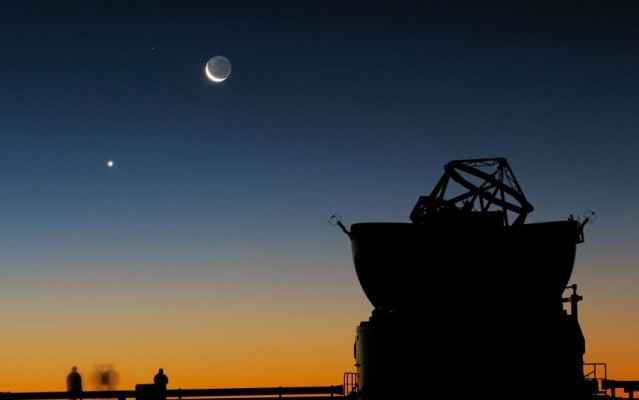
The Impact of the Atmosphere
A fascinating revelation has been made by astronomers: the phenomenon of stars twinkling is not related to any alterations they undergo. So, what causes stars to twinkle in the night sky? The answer lies within the atmospheric dynamics of cold and warm air currents. When warm layers of air pass over colder layers, air vortices are generated. These vortices cause the distortion of light rays, thus altering the apparent positions of stars.
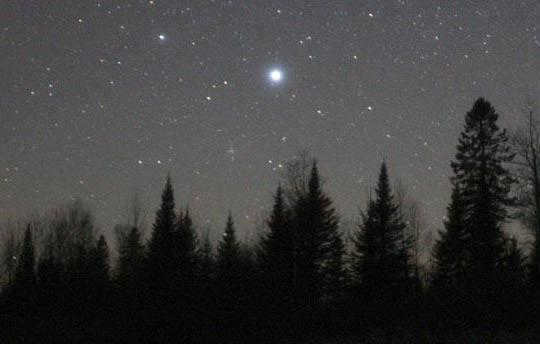
A fascinating fact to consider is that stars do not actually twinkle, despite what we perceive from the ground. The twinkling effect is a result of the light passing through the Earth’s atmosphere and being observed by our eyes. In reality, stars emit a steady light. The phenomenon we witness is a distortion caused by the atmospheric layers the light has to travel through. If these air movements were absent, there would be no twinkling, even from the most distant star in the vastness of space.
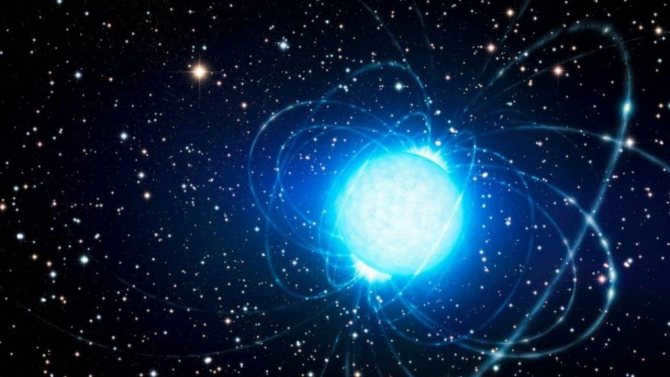
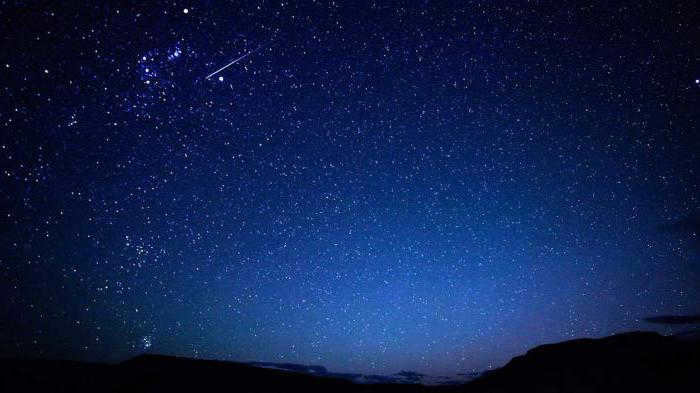
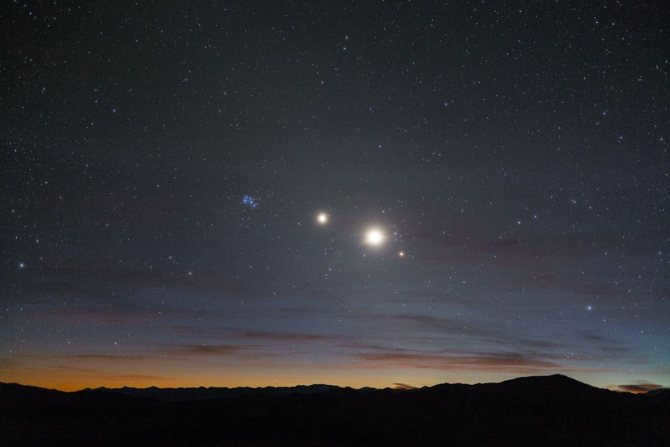
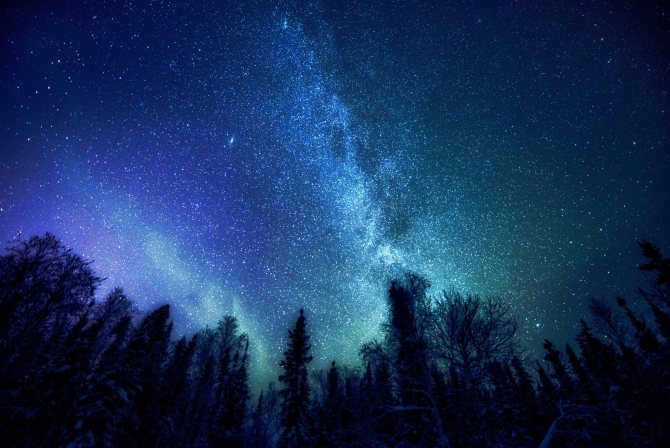
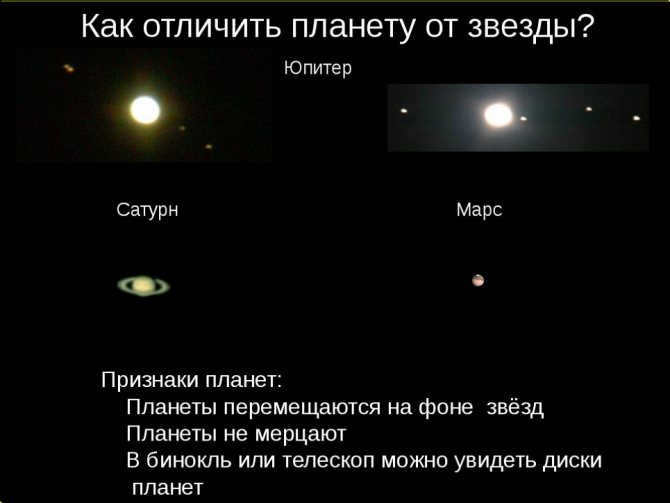
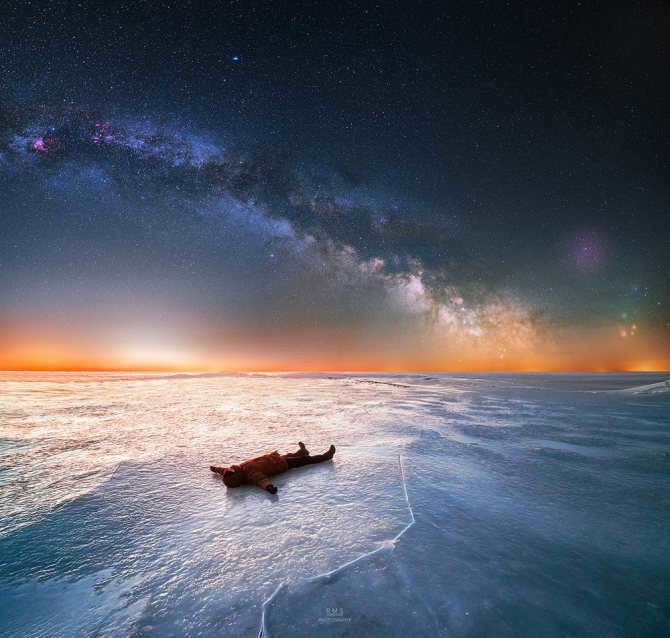
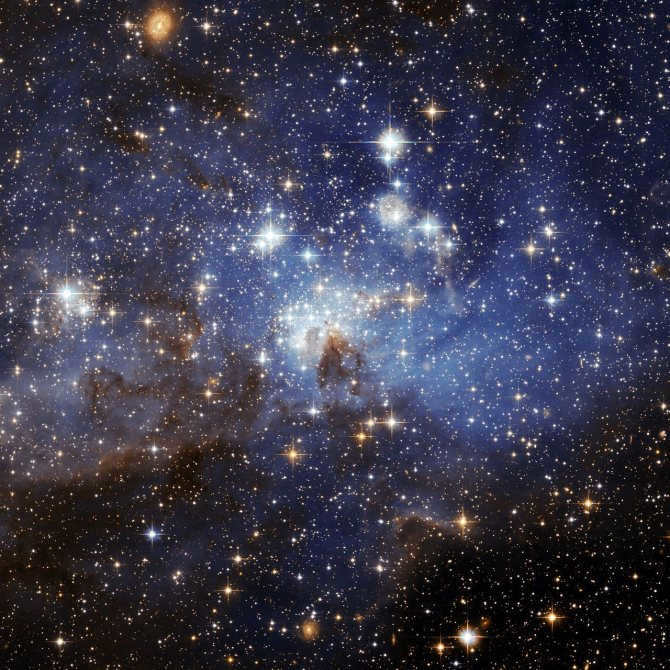
Stars, which are enormous celestial bodies, are located at vast distances from Earth, resulting in their appearance as tiny points of light. Composed primarily of gas, stars take on a spherical shape with uneven edges.
Within these stars, a thermonuclear reaction occurs, causing the gas to heat up and emit a radiant glow. This radiation is powerful enough to traverse cosmic distances, enabling us to observe it.
Interestingly, the light emitted by stars remains relatively constant and steady. The perceived flickering is merely an illusion experienced here on Earth. As light rays pass through our atmosphere, they encounter a barrier that separates us from space.
The atmosphere itself is composed of various layers, each with its own temperature and density. As a result, these layers refract light in different ways, leading to the twinkling effect we see in stars. It is truly a captivating optical phenomenon.
If, for instance, one were to gaze at the celestial bodies from a spacecraft, from the lunar surface, or from another extraterrestrial location devoid of an atmosphere, the radiance emitted by the stars would appear to be unbroken and uninterrupted. All reputable scientific observatories endeavor to position themselves at elevated altitudes within mountains, if feasible. In such locations, the atmospheric strata are comparatively less dense, resulting in diminished flickering that could potentially impede the process of observation.
Explaining the Phenomenon
When it comes to the flickering of stars, a scientific explanation reveals that this phenomenon occurs when the starlight transitions from a denser atmospheric layer to a less dense one. Moreover, as previously mentioned, these layers are in constant motion in relation to each other. According to the principles of physics, warm air ascends while cold air descends. Consequently, it is at the boundary between these layers that we witness the flickering effect.
As starlight passes through layers of air with varying density, it begins to flicker and its outlines become blurred, causing the image to appear larger. Simultaneously, the intensity of the radiation and the brightness of the star also fluctuate. Consequently, by studying and observing these phenomena, scientists have gained an understanding of the reasons behind star flickering and the varying degrees of intensity. In scientific terms, this fluctuation in light intensity is referred to as scintillation.
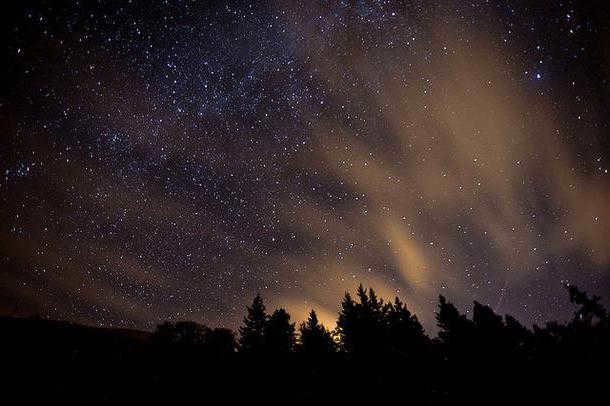
The Brightest Moments of Starlight in the Night Sky and their Illumination Secrets
August emerges as the ultimate month to indulge in the mesmerizing art of stargazing. During this period, the nocturnal atmosphere deepens and the celestial canvas unravels its secrets. It often feels as though one could stretch their hand and touch the heavens above. And as the young ones cast their gaze upwards, they ponder in awe, “Why do the stars shimmer and where do they descend?” The truth is that August gifts us with ample opportunities to witness this celestial phenomenon. A spectacle so extraordinary that it captivates our eyes and enchants our very souls. A longstanding belief holds that upon sighting a falling star, one should make a wish, as it is bound to manifest itself.
Interestingly enough, the captivating display we often mistake for a falling star is actually a meteor ablaze. Nevertheless, this event remains undeniably breathtaking! As time progresses and generations come and go, the sky remains constant – resplendent and enigmatic. Much like our ancestors, we too gaze upon its celestial expanse, discerning mythical creatures and objects within star clusters, making wishes, and daydreaming.
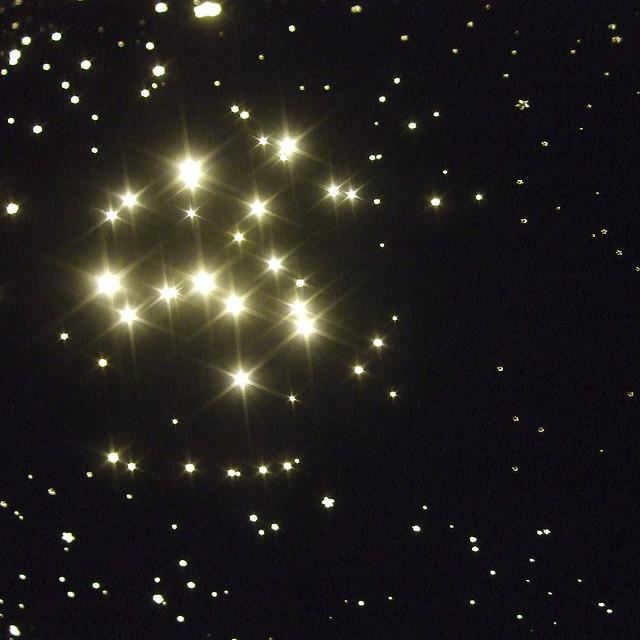
Planets vs Stars: What Sets Them Apart?
It’s worth noting that not every astronomical object that emits light exhibits the scintillation phenomenon. Let’s take planets, for example. They also reflect sunlight, but they don’t flicker. The distinction lies in the nature of their radiation. While stars emit light that flickers, planets do not.
Since ancient times, humans have relied on the stars to navigate through space. In an era where precise instruments hadn’t yet been invented, the celestial bodies guided travelers in the right direction. Today, this knowledge remains just as crucial. The field of astronomy was born in the 16th century with the invention of the telescope. This marked the beginning of close observations of starlight and the study of the laws that govern their twinkling. The word “astronomy” itself is derived from the Greek term meaning “law of the stars.”
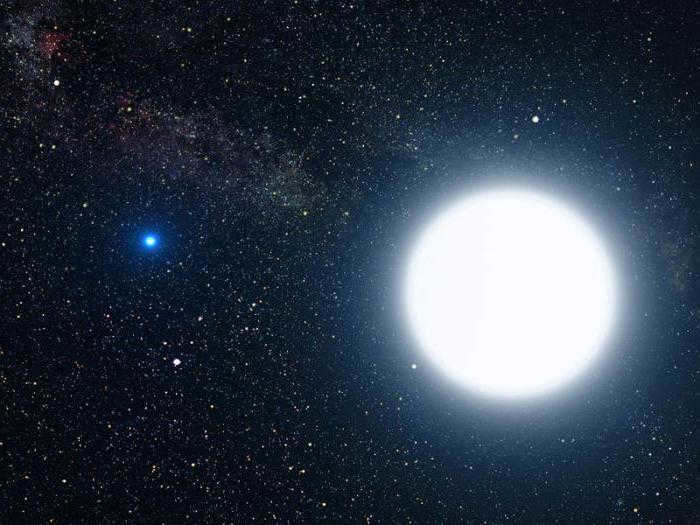
Not all stars twinkle
Some celestial objects, such as planets, emit a constant glow from reflected sunlight and do not exhibit the phenomenon of twinkling.
In the night sky, Venus and Mars can often be mistaken for large, bright stars. However, they possess a unique quality that sets them apart from actual stars – they do not twinkle. The reason for this lies in their proximity to Earth, which allows us to perceive them as small disks rather than mere points of light.
When light reaches these planetary disks, it is reflected from various regions. Although the light undergoes the same process of refraction, it is refracted differently across the surface of the disk. Certain areas reflect bright light while others reflect dimmer light.
As time passes, these areas change position, resulting in a continuous variation in the intensity of the reflected light. However, the overall average intensity of radiation from the entire surface of the disk remains constant.
Consequently, the disks of these planets emit a steady, unblinking light that distinguishes them from the twinkling stars in the night sky.
The study of stars
Astronomy focuses on examining the universe and celestial objects, including their movement, position, composition, and origin. Thanks to advancements in scientific understanding, astronomers have been able to differentiate between twinkling stars and planets, as well as comprehend the formation of celestial bodies, their systems, and satellites. This field of science has expanded its scope beyond the confines of our solar system, exploring phenomena such as pulsars, quasars, nebulae, asteroids, galaxies, black holes, interstellar and interplanetary matter, comets, and meteorites. In essence, astronomy encompasses the study of all aspects related to outer space.
The luminosity and hue of the twinkling starlight are also influenced by the altitude of the atmosphere and the distance from the horizon. It is evident that stars near the horizon emit a stronger radiance and flicker with varying hues. This phenomenon becomes particularly enchanting on chilly nights or immediately after rainfall. During these moments, the sky remains clear, enhancing the brilliance of the shimmer. Sirius possesses a unique luminosity.
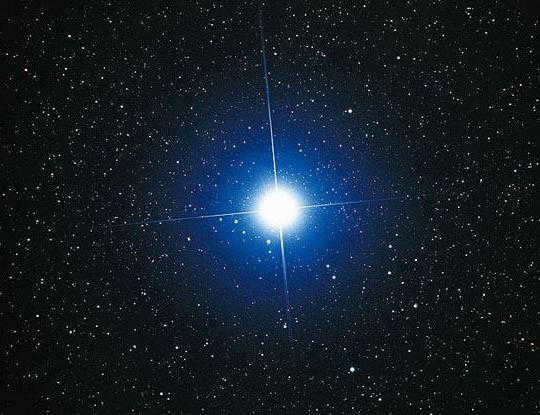
Moscow Planetarium
Experience the wonders of the universe at the incredible Moscow Planetarium. Whether you’re a professional astronomer or just a curious enthusiast, there’s something here for everyone. Our knowledgeable guides will take you on a captivating journey through space, serving as your trusted companions throughout the entire experience. Get ready for unforgettable moments as you lose track of time and become mesmerized by the mysteries of the unknown.
Your adventure begins at the Museum of Urania, where you’ll delve into the fascinating history of astronomy from ancient times to the present day. Explore a replica of the first telescope ever made, make a wish on a massive meteorite, and capture a photo near our life-sized Moon or Mars replicas.
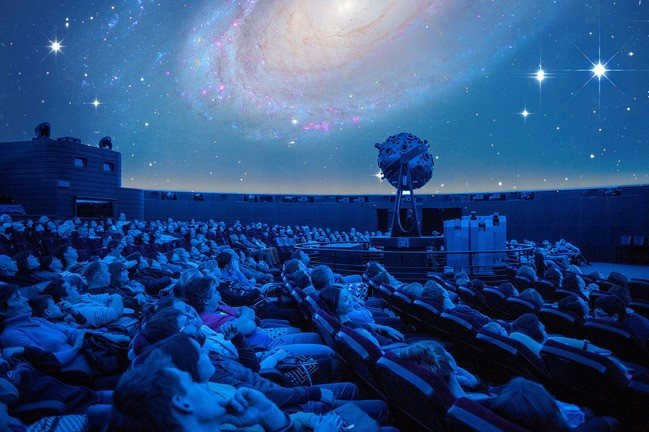
But that’s not everything: once you embark on the cosmic adventure, you will be transported to the Sky Park, which has been designed to resemble the oldest observatories in the world. Within this incredible space, you will discover iconic landmarks such as Stonehenge, the Indian winged staircase known as Samrat Yantra, the magnificent pyramid of Cheops, and even have the opportunity to measure your steps along the Moscow meridian.
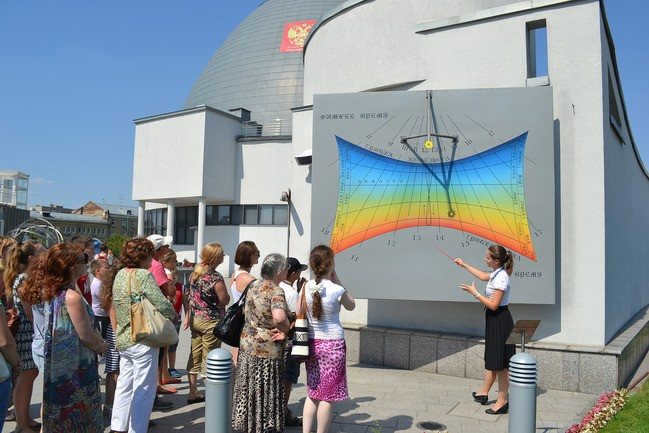
If you dream of becoming an intrepid explorer of the cosmos, delving into the secrets of the universe and its vast expanses, look no further than the Interactive Museum “Lunarium”. This extraordinary place is a captivating fusion of captivating experiments and a genuine marvel for the imaginative mind. Embark on a thrilling adventure as you launch your very own rocket, tune into radio signals from the depths of space, communicate with extraterrestrial civilizations, and even create your very own loyal companion – an alien! Here, amidst these extraordinary experiences, everyone can revel in the role of a true hero, saving the planet from potential meteorite catastrophe.

Moreover, you have the opportunity to conclude your celestial adventure in the 4D cinema. The experiences are indescribable: an advanced stereo projection system, moving chairs, and captivating special effects. After uncovering all the enigmas of existence in the cosmos, you will embark on a journey to fathom the vastness of the universe.

When gazing into the vast expanse of the night sky, one can witness the mesmerizing display of twinkling and shimmering celestial bodies. It appears that certain stars flicker and fade, while others tremble and some even undergo fluctuations in their brightness. Scientists have offered scientific explanations to shed light on the reason behind this phenomenon, particularly its heightened visibility on chilly or gusty evenings. It seems as though the universe itself has the power to entrance and captivate individuals in an inexplicable manner.
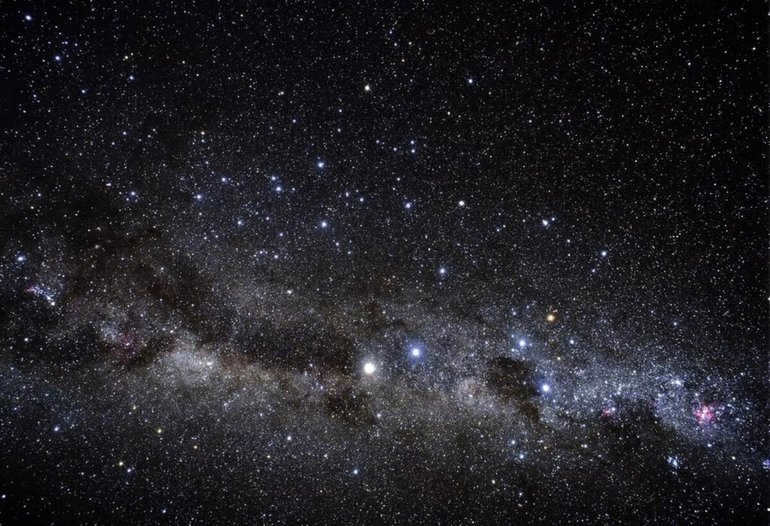
Reasons behind the luminosity of celestial objects
Stars and other celestial objects that can be observed with the naked eye at night are enormous celestial bodies. When viewed from the ground, they may appear as tiny dots, but in reality, their luminosity is so intense that it travels a vast distance to reach the Earth’s surface. Stars are predominantly irregularly shaped balls composed of gas, with jagged edges. Within these stars, there is a constant thermonuclear reaction that heats the gas content and creates a glowing effect. The radiation emitted by stars is actually a relatively smooth and continuous flow, and the flickering illusion can only be perceived from the Earth’s surface. As the rays of light pass through the Earth’s atmosphere, they encounter a significant barrier between space and the planet. This barrier is characterized by a diverse composition, with each layer having different temperatures and densities. These variations in the atmosphere contribute to the multiple refractions of light, resulting in the unique optical phenomenon known as star twinkling.
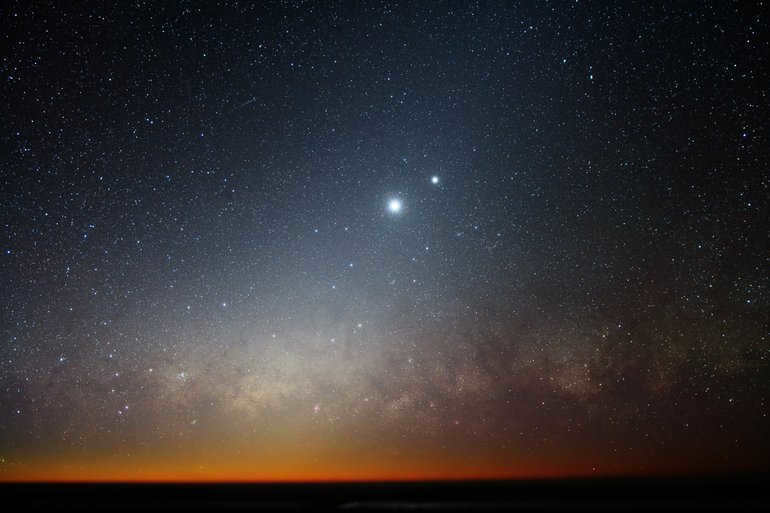
The twinkling of stars can be attributed to the movement of gases in the Earth’s atmosphere. As these gases move, they scatter and refract the light emitted by the stars, causing them to appear as if they are twinkling with different colors. This phenomenon can be understood using the analogy of a curved lens with a changing angle, through which we observe the stars.
The most vibrant and vivid celestial bodies are those that are positioned relatively low on the horizon. Sirius, the brightest star that catches the eye throughout the year, is particularly notable. In accordance with popular beliefs, a strong flickering during the summer months indicates an impending and sudden change in weather caused by a powerful cyclone.
The exceptionally beautiful glow hampers scientific astronomical observations, yet it is precisely this phenomenon that gives the sky such a close and animated appearance.
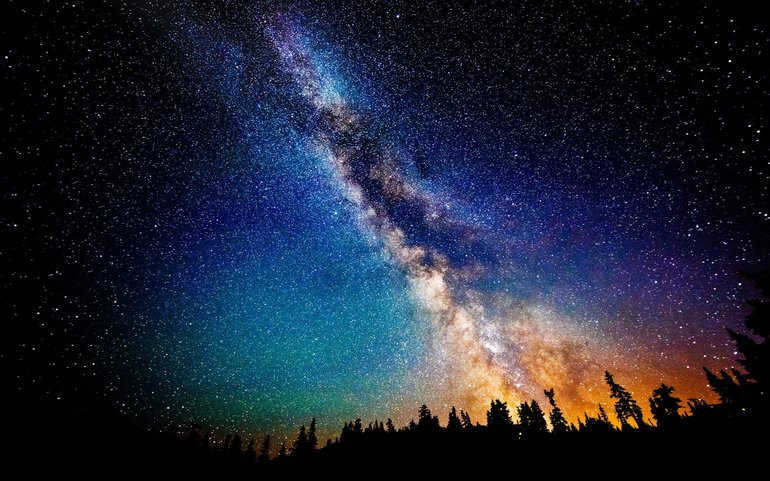
First and foremost, it is important to mention that each star possesses its own unique hue. This characteristic is determined by the temperature and intensity of the ongoing thermonuclear reaction within the celestial body. The higher the temperature, the closer the color of the star will be to a bluish or white shade. These stars are the hottest, surpassing even the surface temperature of the sun. On the other hand, yellow and red stars are cooler in comparison.
The change in color when an object is heated can be observed by examining the incandescence of a metal surface. As the temperature increases, the original material’s color transitions from a bright red to a dazzling white at its highest temperature. Astronomers utilize the light emitted by celestial bodies to estimate their approximate age:
- During an explosion, a star exhibits maximum temperature and emits a bright blue-white glow;
- As the reactions become less intense, the color changes to a yellowish hue;
- When reaching the end of its life cycle, the star transforms into a red color.
Therefore, the Sun, which emits a vibrant orange light, can currently be classified as being in the “middle-age category”. It is this hypothesis that scientists utilize to elucidate the phenomenon of stars flickering in various hues.
Characteristics of planetary radiation
It is important to keep in mind that not all celestial bodies that are visible in the night sky possess the ability to emit a mysterious shimmer and sparkle. Planets do not produce light, but they can be identified by their appearance even from a distance: they have a shape that is not like dots, but rather like a glowing disk with distinct and even edges. These are stars that ceased to exist millions of years ago and no longer contain any gas.

The planets don’t emit their own light, but instead reflect the rays of a nearby celestial object. In our solar system, this object is the Sun.
Another way to distinguish planets with the naked eye is by their movement against the backdrop of the starry sky. Without the use of professional instruments, Jupiter and Venus can be easily seen with a yellowish glow, and sometimes Mars with its distinctive red disc. Other dim space giants can only be observed with the help of astronomical equipment.
Thankfully, one can appreciate the magnificence of the celestial expanse, comprehending the reason behind the intermittent flickering of stars, and discerning their distinction from planets, even without the aid of scientific apparatus. On a clear night, in locations devoid of luminous urban sprawl, this wondrous spectacle evokes awe and captivates the mind, instilling a sense of tranquility and inspiring flights of fancy.
You might also find these articles interesting:
The night sky full of stars always evokes unique emotions, often making earthly matters seem unimportant and causing a person to feel like a tiny piece of the vast universe, a part of something greater than just planet Earth.
Have you ever wondered why stars twinkle? This question has likely crossed the minds of many. It’s a truly beautiful sight, especially after rain, when the stars shimmer in a multitude of rainbow colors. People don’t always have a straightforward answer to such a seemingly simple question.
A straightforward response to an uncomplicated inquiry
The flickering of stars is directly caused by variations in the atmosphere. Because the Earth’s atmosphere is not uniform, air masses move at different speeds, creating distinct currents and flows with varying temperature properties, density, and other characteristics. As a result, starlight passing through the atmosphere can be refracted in numerous ways, giving rise to the illusion of this enigmatic twinkling.
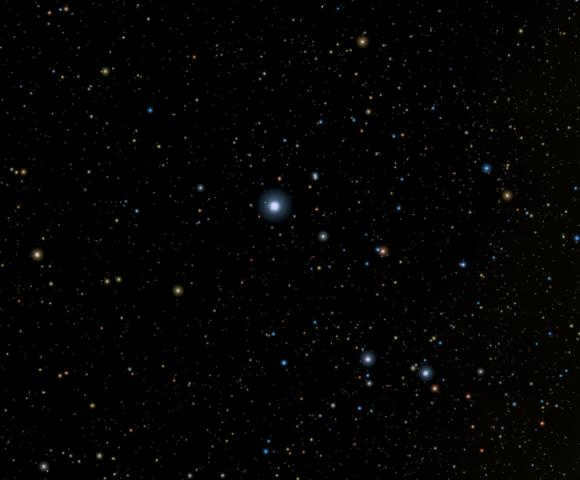
Shining star
When you look up at a shining star in the night sky, it’s like gazing at the distant lights of a bustling city. However, if the air is filled with moisture, the star’s light will refract and scatter, creating a dazzling display of colors. The reason why stars twinkle is actually quite simple. As a star gets closer to the horizon, the refraction of its light becomes even more pronounced due to the denser air, resulting in a more pronounced twinkle.
Stars exhibit a vast array of physical characteristics that distinguish them from planets, so it is not surprising that these celestial beings emit light in different ways. Even on a picturesque night sky filled with twinkling stars, one can easily differentiate the steady and constant light emitted by the planets in our solar system. Unlike stars, their light does not flicker, similar to the Moon or the Sun. This can be perceived even without the aid of an ultra-precise microscope.
What causes this phenomenon? Taking into consideration the factors that affect the light emitted by stars and planets, such as refraction in the Earth’s atmosphere, it can be concluded that stars flicker on a point-by-point basis, while planets do the same, but due to the multitude of points, an illusion of even light is created. It all comes down to quantity.

Diverse Stars
When observing stars without any optical aids, they may appear to be indistinguishable, varying only in their brightness. However, upon closer examination, it becomes evident that stars can actually differ in color. This phenomenon particularly applies to the largest and brightest stars. For instance, Arcturus and Aldebaran exhibit an orange hue, while Betelgeuse and Antares present a red shade. On the other hand, Sirius and Vega radiate a white light, whereas Spica and Regulus emit a white light with a slight blue tint. There are even yellow giants like Capella and…
Astronomers classify stars based on their temperature, with red stars having surface temperatures up to 4 thousand degrees considered relatively cold, while blue-white stars are deemed the hottest, reaching an astonishing temperature of 10-30 thousand degrees Celsius! This helps explain why stars twinkle, as their extreme temperatures allow them to exhibit such fascinating phenomena.
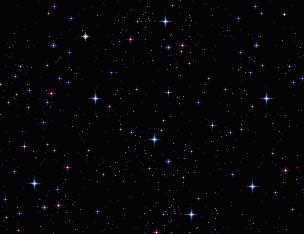
What is the reason for stars shining in different colors? Is there any truth to the idea that stars twinkle? The answer to this query depends on one’s perspective. If we associate this phenomenon with refraction, then it can be referred to as twinkling. However, it’s important to note that stars themselves do not emit light; it is the observer on Earth who perceives them as shining. If we were to view this spectacle from space, there would be no flickering. According to astronauts, stars radiate brightly and uniformly, and the twinkling effect is only visible to those who remain on Earth.
Before delving into explanations, let’s clarify that the phenomenon of twinkling occurs for all stars, not just Sirius. (If you observe a very bright star in the sky with minimal twinkle, it is likely a planet such as Venus or Jupiter). Stars closer to the horizon twinkle more intensely, while those at the zenith twinkle with less intensity.
This principle also applies to the rapid change of colors in stars. Sirius is not the sole star that displays this effect, but it is particularly remarkable in the case of this star due to its status as the brightest star in the night sky, capturing immediate attention. To be honest, in our geographical location, Sirius consistently flickers since it remains relatively low on the horizon.
The Earth’s atmosphere is responsible for all these phenomena. It is worth noting that the air surrounding our planet is not uniform. Different altitudes have different temperatures, which result in the creation of air currents, vortices, Hadley cells, and other formations. The air cells have varying densities due to the temperature differences, causing them to refract and deflect light in different ways. To simplify, these atmospheric cells can be compared to weak lenses that can focus and redirect light rays passing through them.
When stars are observed near the horizon, they twinkle more intensively compared to when they are observed at the zenith. This is because the light from the stars passes through a thicker layer of air. Figure: Bob King
Due to this reason, even during the most peaceful and clearest evening, starlight reaches us in a slightly distorted manner. As the light from the star passes through the turbulent atmosphere, it will either be focused and fully visible to the naked eye (resulting in a bright appearance), or it will be mostly deflected to the side (causing it to fade). This rapid variation in brightness is what we refer to as flicker.
By the way, you can directly observe the bending of light if you use a high-powered telescope to observe Sirius. Not only will the star appear unfocused in the eyepiece, but it will also move from side to side, giving the impression of being alive!
However, the most remarkable consequence of this phenomenon is that occasionally a star can vanish completely! If you observe Sirius attentively on a shimmering night, you are highly likely to witness such an occurrence!
Another fascinating moment is when Sirius shimmers in a multitude of colors resembling a rainbow. This phenomenon is due to atmospheric circulation as different wavelengths of light refract differently. Essentially, the air acts as a prism, causing the star’s light to disperse into a spectrum. As a result, we perceive different colors one after another. By capturing consecutive snapshots of Sirius with extremely short exposures, we can witness the entire range of colors in the photographs!
If you take a longer exposure shot of the star and simultaneously move the camera from side to side, causing the star to constantly move within the lens, you can capture a stunning multi-colored curve in the photo of Sirius.
The flickering of Sirius is captured through the use of a shaky camera. Photo: www.cosmicriver.net
Sirius is actually white in color. It is a hot star with a surface temperature that is nearly twice that of the Sun! In southern countries where Sirius rises to the zenith and does not flicker as much, the white color of the star is clearly visible.
Throughout history, humanity has been drawn to the vastness of space, leading to significant investment in both manpower and finances for its exploration. Countless individuals, including some of the brightest minds, have dedicated their lives to understanding the mysteries of our universe. As a result, we now possess a solid foundation of both theory and practical knowledge. Today, even young students can easily grasp concepts such as why stars twinkle, the potential existence of life on Mars, the forces that propel planets through space, and much more.
What is a star?
A star is a massive celestial object composed of gas giants that possess strong gravitational forces:
- They began to form shortly after the birth of the Universe.
- Through the force of gravity, larger particles attracted smaller particles, gradually forming a gas sphere.
- Scientists theorize that nebulae served as the precursors to stars. The young star would gather all the available matter through its gravitational pull.
- The twinkling points of light in the sky are actually the “cosmic forges”. Within them, intricate nuclear reactions occur every second, releasing hydrogen.
- It is only through the light, energy, and heat provided by a star that organic matter can exist. It is not necessarily limited to intelligent life; without light and energy, no living beings can exist in principle.
The measurement of the distance to all stars is done using light years, with the exception of the Sun which is only a few light-minutes away.
Considering the current state of advancement, it is highly unlikely that humans will ever have the opportunity to physically visit the nearest star system, unless there is a significant breakthrough in scientific advancement. A revolutionary discovery is required to make this possible.
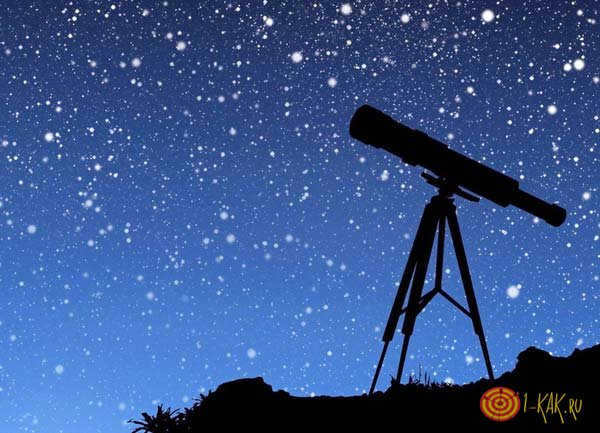
What causes stars to twinkle?
When you gaze at the night sky, you may notice a mesmerizing display – the stars flicker, glimmering brightly one moment and then fading away the next. This phenomenon is both captivating and thankfully not intense enough to trigger an epileptic seizure.
While it may be tempting to attribute this flickering to the stars themselves, especially when considering gas giants that reside at immense distances from Earth, the truth lies elsewhere.
Imagine if a massive star were to suddenly extinguish or grow brighter in space. The impact on nearby planets would be catastrophic, given the magnitude of energy emissions.
However, the real explanation for the twinkling stars can be found closer to home, specifically within the Earth’s atmosphere. More precisely, it is the atmosphere’s inherent inconsistency that causes this phenomenon:
- After a rainfall.
- During hot weather.
- In the presence of strong or continuous wind.
- During a chilly evening.
The explanation lies in the fact that the air masses experience uneven heating and are in constant motion. This means that starlight must traverse not a uniform atmosphere, but rather an intricate “mosaic” of air.
Once space exploration becomes accessible to the general public, it will become evident that celestial bodies emit a consistent and unwavering light in a vacuum.

What causes stars to shine in different colors?
During the month of August, there is always a reason to spend the night outdoors and enjoy nature, as astronomers annually remind us of the spectacular phenomenon known as the “starfall.” However, it is important to note that stars do not actually fall from the sky, nor do they change their positions in space.
It is important to understand that even the smallest star is thousands of times larger than our planet. However, there is another fascinating phenomenon that occurs:
- Small clusters, asteroids, or “bolides” enter Earth’s atmosphere.
- Under the influence of gravity, these objects hurtle towards the surface of our planet.
- As the “projectile” gains velocity and enters Earth’s atmosphere, it encounters the force of friction, which is not present in the vacuum of outer space.
- This phenomenon is so intense that the solid rock actually starts to undergo combustion.
- From the ground, an observer can witness a tiny speck soaring through the sky and descending somewhere on the horizon.
Occasionally, nothing actually reaches the Earth’s surface, but on other occasions, small fragments of rock do make contact. Such a memento can make a great addition to any home collection. The probability of a rock landing on your head is extremely low, but it is not impossible.
Considering the vast expanse of the Earth and the relatively small space occupied by a single human being, you would have to do something quite unfortunate to be affected by a “visitor from outer space.

What is the lifespan of stars?
There are varying opinions regarding the duration of stars’ lives and the likelihood of extraterrestrial life on other planets:
No evidence of extraterrestrial life has been discovered on any of the planets within our solar system.
It is a well-established fact that all stars eventually come to an end.
There is a high probability that extraterrestrial life exists on one of Saturn’s moons, Titan.
Throughout their existence, giant stars go through several consecutive stages.
Despite numerous claims from alleged eyewitnesses about UFOs, no contact has been made with extraterrestrial civilizations.
The lifespan of a celestial body is typically measured in billions of years, and sometimes even tens of billions.
From a purely mathematical standpoint, given the vastness of time and space, the simultaneous existence of advanced civilizations is unlikely.
Our Sun is a relatively young star, so the future of humanity may not be guaranteed for an extremely extended period of time.
When our star eventually exhausts its fuel, civilization and any form of intelligent life may have vanished countless times due to various reasons. If there are any surviving humans at that point, it is likely that our descendants will have the capability to address the challenge of relocating to other stars.
However, when all the stars in the Universe eventually cease to exist, finding a solution will become significantly more challenging. Theoretically, the only option would be to venture beyond the confines of the Universe. Yet, currently, we lack the ability to even fathom such a possibility.
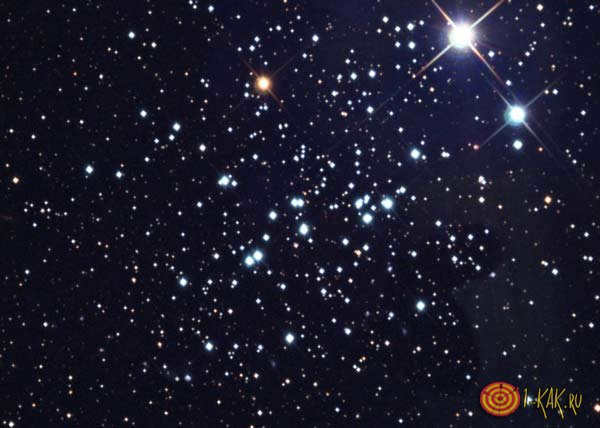
What causes stars to twinkle?
The phenomenon of star twinkling is caused by the Earth’s atmosphere, which not only allows life to exist on our planet but also scatters light:
- This scattering is responsible for the blue color of the sky during the daytime. The sun emits a spectrum of light that includes a blue hue, which gets scattered by the atmosphere.
- The irregularities in the air masses cause stars to twinkle.
- As a result, the intensity of their brightness can change multiple times within a minute.
- In reality, stars emit a steady light in the vacuum of space.
However, planets that are closer to us emit a consistent light, even in our atmosphere. This is because their surfaces reflect sunlight, and when we observe them on a clear day, we see a disc shape rather than a tiny dot.

It is relatively easy to comprehend why stars twinkle, even without possessing a degree in astrophysics. Most of the phenomena in our surroundings can be explained in simple terms. However, there are still mysteries that elude even the most advanced scientific minds.
Video: Stars Sparkling in the Night Sky
In this video, physicist Leonid Agarkov will provide an astronomy lesson discussing the causes behind the sparkling phenomenon of stars in outer space:
Children will find it intriguing to learn about the various colors in which stars twinkle in the sky, the abundance of stars visible at night, the refraction of light in Earth’s atmosphere, and the Hubble telescope.
We aim to present an explanation of why stars twinkle in a language that is easy for children to understand. This knowledge will be beneficial for both children and their parents.
For young children and those who are curious, it would be fascinating to learn the reason behind the mesmerizing beauty of twinkling stars in the night sky. What is it all about? If you focus your gaze on a specific star, you will notice that it sparkles. In order to explain this phenomenon to the kids, parents or teachers at school need to delve into the realm of science and recall the term “stellar scintillation” (that’s the scientific term for flickering). Believe it or not, our naked eyes can distinguish up to 6,000 individual stars without any technological aids.
Children should understand that stars twinkle because we observe them through the Earth’s atmosphere, which is constantly in motion. The light from the stars gets refracted (bent) in various directions, and this is what creates those magical twinkles we see.

To provide a complete explanation for kids about twinkling stars, it’s important to mention that the color of the twinkle can vary. The light itself contains the entire spectrum (red, orange, yellow, green, blue, indigo, and violet). It reaches us as a wave with different frequencies, each frequency representing a specific color. When the light enters the atmosphere at a high angle, it bends and changes speed, resulting in a multi-colored sparkle. This can be demonstrated by using a prism, which will refract the light and create a rainbow.
Now, younger children might wonder why planets don’t twinkle. The reason is that planets are closer to us. Stars are far away, and their light travels a long distance. Planets, on the other hand, are closer and do not emit their own light. Instead, they reflect the light of the sun.
It is important for children to understand that stars appear to twinkle more when they are closer to the horizon. This is due to the thicker atmosphere in those areas. In contrast, if we were in space, we would not observe any twinkling because light is not distorted. This is why the Hubble Space Telescope is incredibly valuable. It is already positioned in space and is able to study celestial objects without any interference.
Earth-based telescopes can also observe stars without the twinkling effect. They achieve this by utilizing sophisticated mirrors that are constantly in motion. These mirrors are used to focus light into a consistent beam, thereby minimizing the impact of atmospheric turbulence. This technique, known as adaptive optics, allows for a clearer view of stars. Now that you understand why stars twinkle, take advantage of our online resources such as photos, videos, drawings, and interactive models to further comprehend the characteristics and properties of objects in space.
Have you ever observed the peaceful and tranquil nature of the starry sky? And if you take a moment to pause and gaze into it, a sense of blissful stillness arises.
It appears as though the Cosmos itself draws you into this indescribable trance, attempting to communicate something significant, to remind you that you are connected to it. And the stars twinkle leisurely and tenderly, as if with understanding, in a familiar manner, winking. They beckon you to embark on a voyage through the Universe.
What causes the twinkling of starlight?
Stars, which are massive celestial bodies, are located at immense distances from Earth. Consequently, when we observe them, they appear as tiny points of light. Stars are composed of gas and have a spherical shape with irregular edges.
Inside a star, there is a thermonuclear reaction that generates heat and causes the gas to emit light. This radiation is powerful enough to travel vast cosmic distances, allowing us to see it from Earth.
However, the starlight itself is relatively steady and constant. The twinkling effect is an optical phenomenon that occurs only when observing stars from our planet. As the rays of light pass through Earth’s atmosphere, they encounter a barrier that creates the illusion of flickering.
The atmosphere is inherently diverse, composed of layers with varying temperatures and densities. These variations cause light to be refracted in different ways, resulting in the twinkling effect we see when looking at stars. It is a captivating optical phenomenon.
However, if one were to observe stars from a spaceship, the Moon, or another planet without an atmosphere, their glow would be steady and uninterrupted. This is why scientific observatories strive to be situated at high elevations in mountains, where the atmospheric layers are thinner and the twinkling is minimized, allowing for clearer observations.
What causes stars to emit different colors?
Anyone who enjoys stargazing has likely noticed that the night sky not only flickers, but also produces a unique “color symphony.” When viewed from Earth, stars can appear in various colors, such as blue, red, white, or yellowish. Interestingly, the same star can even appear to “wink” different colors to individuals standing side by side.
This mesmerizing display is the result of several interconnected factors.
How a star’s color is influenced by its temperature and age
The color of a star is determined by various factors, including its temperature and age. The intensity and temperature of the thermonuclear reaction within a star play a significant role in its coloration. Stars with higher temperatures tend to appear closer to white or blue in color, while stars with lower temperatures may appear redder or even orange.
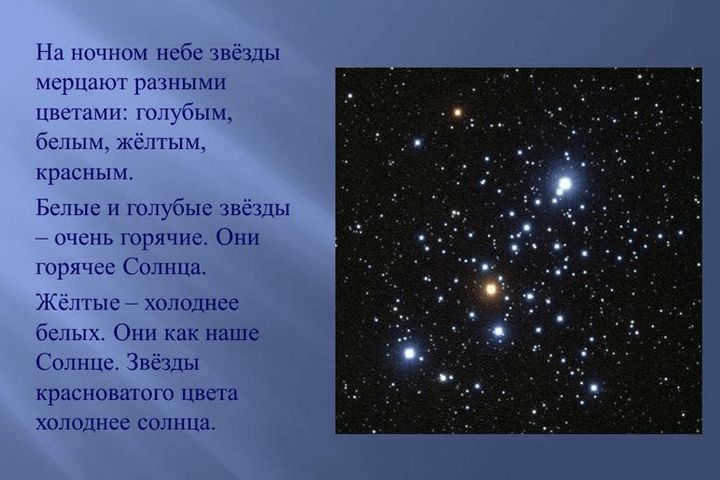
The lowest temperature stars emit a red color. This process of color change can be observed when metal is heated. As the temperature increases, the color shifts from red to white, reaching its highest point at the hottest temperature.
Astronomers have developed a method to determine the age of these celestial bodies based on their temperature and color. A star’s lifespan is limited. It begins with an explosion, during which it reaches its highest temperature and emits a white or blue glow.
As the intensity of reactions gradually decreases, the color transitions from yellowish to red, marking the end of its cycle. The color of our main source of life on Earth, the Sun, is currently a light yellow. In other words, it is a middle-aged “lady” in her prime.
“Distorted view” of the atmosphere
Additionally, our atmosphere is not only varied in density, but also constantly in motion. It experiences constant movements, with layers shifting and air masses swirling. As a result, it creates not only sporadic interruptions of light.
Its dynamic composition also scatters and diffuses the brightness into different spectra and refracts them. This can be compared to the functioning of a curved lens, where the curvature angle is constantly changing. Therefore, when we observe the colorful stars in the sky, we are essentially looking through a large, constantly shifting “lens”.
Why do planets not shimmer?
Unlike stars, planets do not mysteriously flicker in the night sky. Instead, they emit a constant and uniform glow.
One way to distinguish planets from stars is by their shape. While stars appear as points of light, planets appear as luminous disks with clear, even edges. This is because planets are not gaseous like stars, but rather dense, extinguished stars with distinct contours.
So where does the light come from? Planets themselves do not generate light; they simply reflect the rays of nearby stars. In our solar system, the primary stellar luminary is the Sun. Additionally, planets are much closer to Earth’s surface compared to stars. As a result, the Earth’s atmosphere acts as a “lens” that magnifies and stabilizes the appearance of planets, making them appear larger and without any shimmering effect.
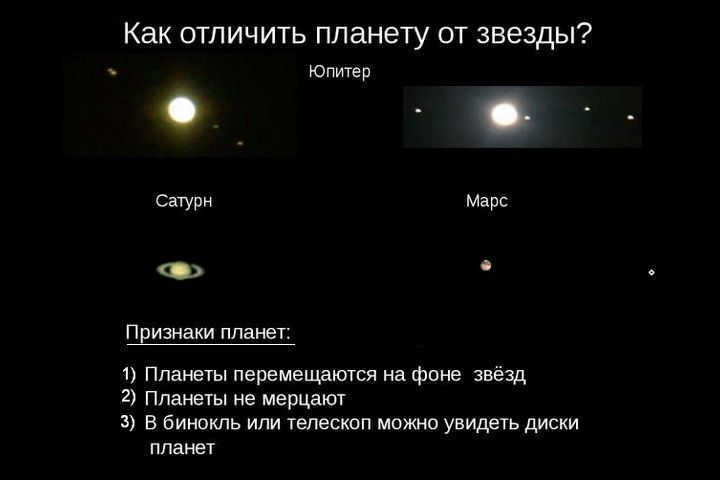
Which planets can you see from Earth without a telescope?
Venus and Jupiter are the most visible planets that can be observed without the need for any special equipment. Venus is the brightest and can be seen clearly during both dawn and evening, while Jupiter is slightly less bright. Both planets have a yellow color.
Sometimes, Mars, which appears as a small, glowing red disk, can also be spotted in the sky. However, the rest of the planets in our Solar System can only be observed with the help of powerful telescopes.
To enjoy the distant yet shining stars, all you need is a clear weather. Their flickering is particularly beautiful and noticeable on frosty nights or after rainfall.
The shimmering of stars is particularly noticeable on windy and frosty nights, and during the summer, a strong shimmer indicates the approach of a powerful cyclone. In winter, stars often shimmer in different hues, resembling jewels in the light. This is especially true for stars that are lower in the sky. For instance, the brightest star in the night sky, Sirius, consistently twinkles and shimmers in various colors, captivating a great deal of attention.
Even the most exquisite photographs of the night sky are unable to capture the twinkle of the stars. Photo: Ruslan Merzlyakov
What is the cause of such phenomena?
Glimmering and glimmering stars of various hues – are not inherent properties of the stars themselves, but phenomena produced by the atmosphere of the Earth. . The Earth’s air envelope is constantly in motion: air masses rise and fall, shift in different directions. Moreover, they have varying temperatures and densities depending on the altitude above the Earth’s surface, atmospheric currents, and numerous other factors. Consequently, air lenses and prisms are formed in the atmosphere, bending and refracting the light of distant celestial bodies as it passes through them.
But it’s simply air you might argue. How can it function as a prism or a lens?
Light is not concerned with whether the substance in front of it is solid, gaseous, or liquid. Light will always be refracted at the boundary between two substances of different densities. The greater the difference in density, the more noticeable the refraction of light becomes. Classic examples of this phenomenon include a prism or a glass of water. When a spoon is placed in a glass, it appears to be refracted due to the refraction of light at the boundary between the air and water.
Because the air masses in the atmosphere have varying densities based on altitude, currents, the formation of Hadley cells, and other factors, they can function as weak prisms and lenses themselves. When starlight passes through such a lens, it is amplified before reaching us. When it is deflected, it becomes attenuated. This rapid fluctuation in light is what we refer to as flicker.
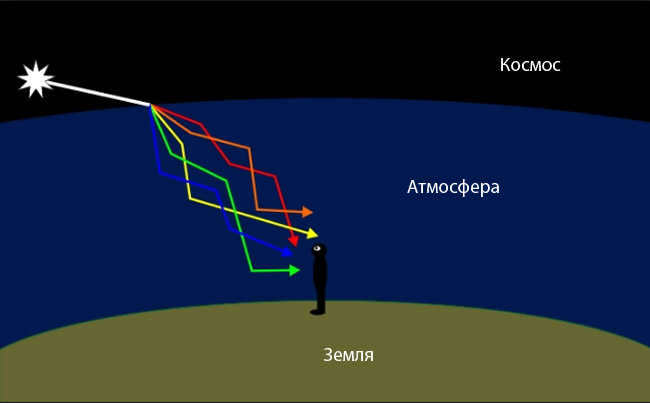
What causes stars to twinkle and shimmer in various colors? This phenomenon can be attributed to the movement of air in the atmosphere. Just like how a prism bends light of different wavelengths, starlight also gets bent as it passes through air prisms. However, instead of a single color, we observe a sequence of colors. By taking quick exposures of a twinkling star, we can capture a wide range of colors in the resulting photos!
Reference: Natskies Observatory
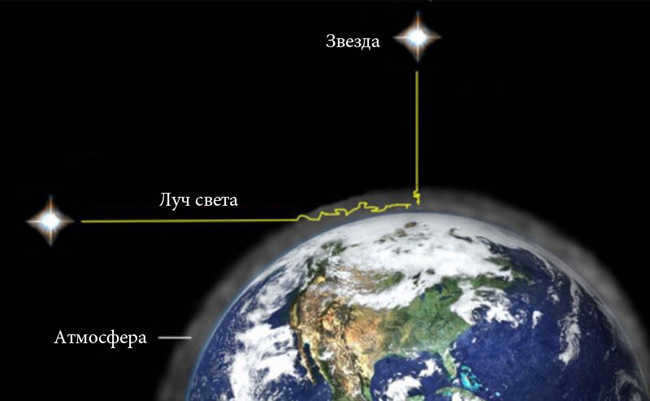
Stars sparkle with various colors more intensely when they are low on the horizon compared to when they are closer to the zenith. This is because the light from these stars has to travel through a thicker layer of air before reaching our eyes. As a result, the light is distorted to a greater extent, leading to the twinkling and shimmering effect.
Now, do stars in outer space also twinkle and shake? The answer is no! When astronauts are in orbit around the Earth, they are outside the dense layers of the atmosphere, allowing them to observe the starlight in a stable and consistent manner.
Because of a lack of clear understanding of the Mayan calendar, the recorded end date was mistakenly interpreted as the date of the apocalypse, resulting in widespread panic and alarm among the population.
Frequently, we observe peculiar illuminations in the atmosphere. What is their origin? This inquiry is commonly posed, as distinguishing celestial objects other than the Sun and the Moon appears to be quite challenging for most individuals.
In order to assist those with an interest in the celestial realm, NASA personnel have devised a specialized diagram aimed at unraveling the enigma of these luminous phenomena.
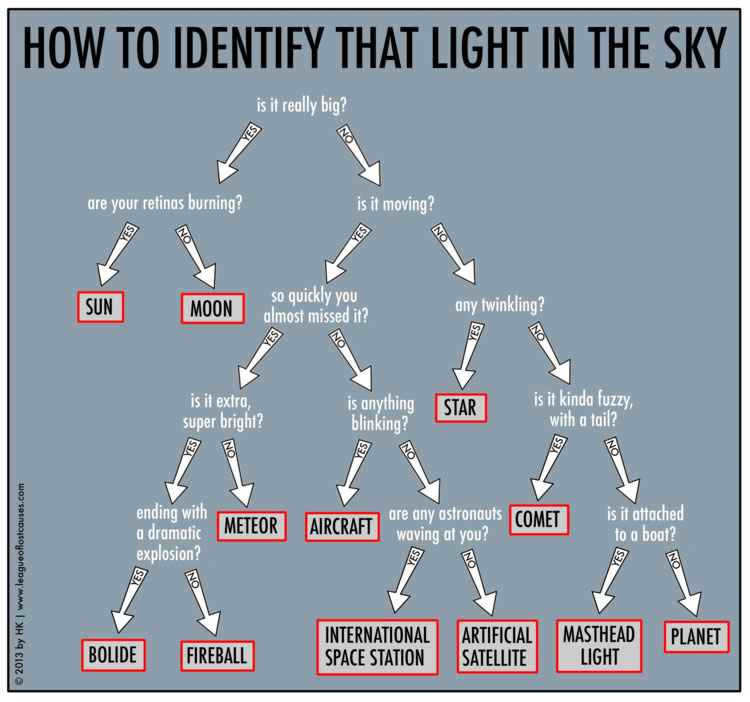
By making observations and utilizing basic understanding, we can gain insight into the enigmatic illuminations in the celestial realm.
Take note of their motion and flickering. If these lights exhibit such behavior, it is likely that you reside in close proximity to an urban area, and the illuminated object in the sky is likely an aircraft. Only a small number of stars and satellites possess enough luminosity to penetrate the artificial glow that pervades the atmosphere.

If you reside in a remote area, the luminous illumination in the celestial expanse is more likely to be a celestial body. It could be the silhouette of either Venus or Mars directly in your view.
Venus generally emerges near the horizon shortly before sunrise or shortly after sunset.
Flying illuminations in the atmosphere
Occasionally, it can be quite challenging to discern whether a luminous emission represents an aircraft’s trajectory at a relatively low altitude near the horizon or a brilliant celestial body. At times, even after careful scrutiny for several minutes, uncertainty persists regarding the nature of those nocturnal luminosities.
The provided illustration furnishes a somewhat lighthearted, albeit highly accurate, explanation.
An aircraft is denoted by a leisurely moving entity adorned with lights of various hues. Slower and quieter entities signify satellites. A stationary object that exhibits minimal displacement throughout the night signifies a planet, and if the object remains motionless, a star is situated before you.
A paucity of knowledge regarding the celestial sphere, as alluded to earlier, can engender paranoid ideations and conclusions.
Astronomers who attempted to console the terrified individuals were branded as dishonest.
Nibiru
Nibiru is an imaginary celestial body situated on the outskirts of the solar system. There is no empirical evidence supporting the existence of this planet.

The ancient Sumerians are said to have made a prophecy that in December 2012, Nibiru would enter the Earth’s orbit, resulting in chaos and widespread devastation.
David Morrison, a scientist at NASA, firmly believes that Nibiru is not real. Even if it were real, it would have the potential to cause planetary disturbances.
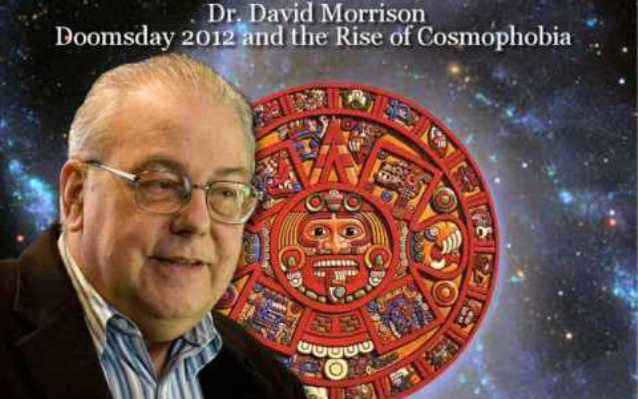
The Great Rift, located in the constellation of Swan, is said to be another potential source of danger. According to certain beliefs, this is the ominous location where the Earth will be engulfed, and where the degenerate peoples will be consumed by the dark gods.
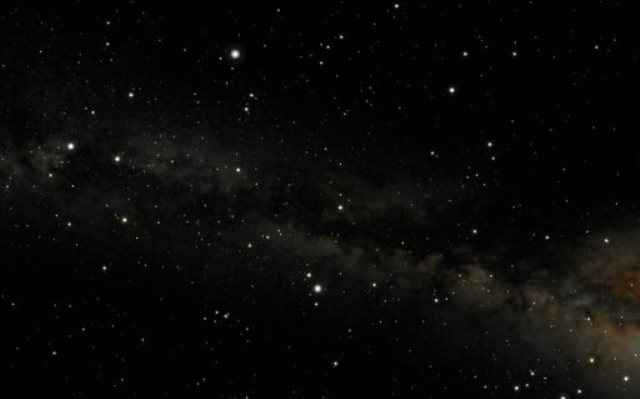
The ancient Mayans have often been associated with these less optimistic prophecies, but no concrete evidence supporting their involvement in such ideas has ever been uncovered.

The Great Rift resembles a dark stream that extends from the brilliant star Deneb in the constellation Cygnus in the southwest to the constellation Sagittarius in the heart of our galaxy. The stream itself consists of obscure dust that appears mysteriously black.
The night of September 11 will present an excellent opportunity to observe the realm of the “ice giant” Uranus. By 2 a.m., Uranus will be in close proximity to the Moon, whose visibility will gradually diminish.
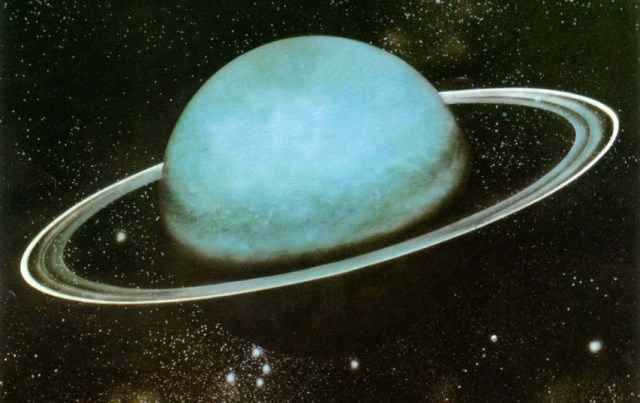
Uranus and Neptune are known as ice giants. They are situated at a much greater distance from the Sun compared to the gas giants Jupiter and Saturn, resulting in significantly colder temperatures. These two planets have a gas atmosphere that consists of a higher concentration of “ice,” similar to frozen water, along with methane and ammonia.
Records in Space
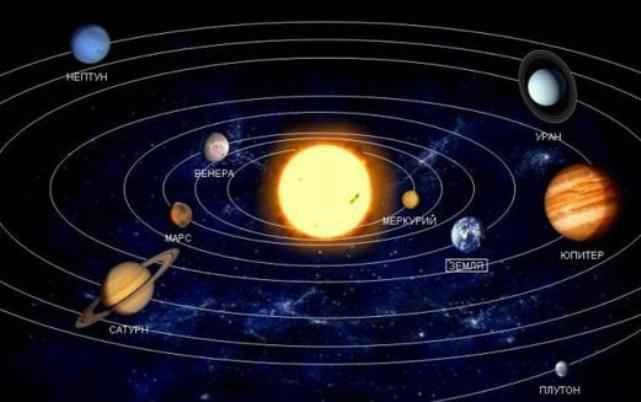
Jupiter is known as the “fastest” planet due to its rapid rotation on its own axis. In fact, it rotates faster than any other planet in our solar system. With a rotation period of only 0.41 Earth days, a day on Jupiter lasts less than 10 Earth hours.
On the other hand, Venus is the slowest planet in terms of rotation speed. It takes Venus approximately -243 days to complete a full revolution around its axis. The negative sign indicates that Venus rotates in a clockwise direction, in contrast to the counterclockwise rotation of our own planet.
Looking up at the night sky filled with stars always evokes a special sense of wonder. In those moments, earthly matters often fade away, and one can’t help but feel like a small part of the vast universe. It’s a reminder that we are part of something greater than just planet Earth.
Have you ever wondered why stars twinkle? This question has probably crossed the minds of many people. It is a truly captivating sight, especially on a rainy day, when the stars glisten with an array of colors. It can be quite challenging to come up with a simple answer to such an innocent question.
An uncomplicated response to a straightforward query
The twinkling of stars is directly caused by fluctuations in the air. The Earth’s atmosphere is not uniform, resulting in air masses moving at different speeds and forming various currents and streams with distinct temperature properties, densities, and other characteristics. As a result, starlight passing through the atmosphere can be refracted in numerous ways, creating the illusion of this enigmatic twinkling phenomenon.


Why do stars twinkle?
When you look up at a twinkling star in the sky, it’s like seeing the lights of a big city from afar. And if the air is filled with moisture, the light will change direction and refract, creating a shimmering display of colors. The reason why stars twinkle is actually quite simple. As a star moves closer to the horizon, the refraction becomes more intense due to the denser air, causing the twinkle to become more pronounced.
Is it possible for planets to twinkle?
Stars and planets have distinct physical characteristics, which is why they shine differently in space. Even on a clear night with twinkling stars, you can easily differentiate the steady and constant light emitted by the planets in our solar system. Unlike stars, such as the Moon or the Sun, planets do not flicker. This can be observed without the need for an ultra-precise microscope.
So why is there a difference? Taking into consideration how the light from stars and planets must be refracted in the layers of the atmosphere, we can conclude that stars twinkle point by point, while planets also twinkle, but due to having numerous points of light, it creates an illusion of consistent brightness. It all comes down to quantity.
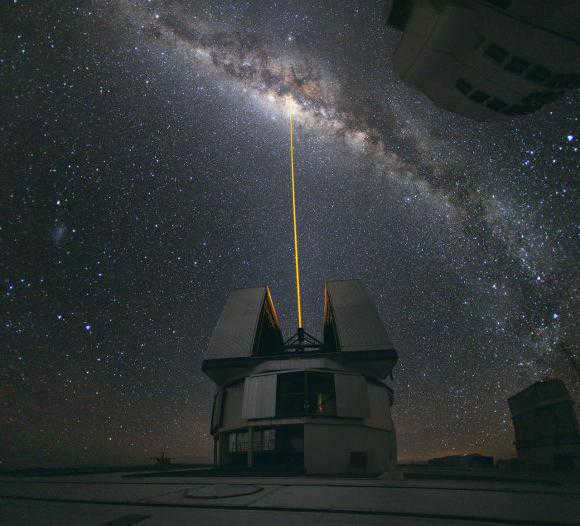
Stars of various hues
When observing the night sky with the naked eye, all stars may appear similar, differing only in their brightness. However, this assumption is far from accurate. Upon closer inspection, it becomes evident that stars can be distinguished by their colors. This phenomenon particularly applies to the grandest and most brilliant stars. For instance, Arcturus and Aldebaran exhibit a vibrant orange hue, while Betelgeuse and Antares boast a striking red coloration. Sirius and Vega, on the other hand, shine with a pristine white radiance, while Spica and Regulus emanate a white light tinted with a hint of blue. Additionally, there are even yellow giants such as Capella and
When it comes to stars, astronomers correlate their color with a crucial factor – temperature. Stars with cooler temperatures, measuring up to 4,000 degrees Celsius, are classified as red. On the other hand, the hottest stars are known as blue-white stars, and they can reach an astonishing temperature of 10,000 to 30,000 degrees Celsius! With such extreme temperatures, it’s no wonder that stars twinkle and possess such remarkable characteristics.

What is the reason behind the twinkling of stars and do they actually twinkle? The answer to this inquiry varies depending on the perspective. If we associate this phenomenon with refraction, then it can be referred to as flickering. However, it is worth noting that stars themselves do not emit light; this impression is created by the observer on Earth. If we were to observe this spectacle from space, there would be no flickering. According to astronauts, stars shine brightly and uniformly, only appearing to twinkle to those who are observing from Earth.
The stars in the clear night sky are scattered like diamonds on a black velvet background: not only do they shine, but they also twinkle, gleam, shimmer, and sparkle. The brightness of the light emitted by distant stars is uneven, giving the illusion of flickering.
Our captured video shows a clear demonstration of the twinkling effect by our “heroine”. The star Arcturus, located in the Volopassus constellation, is the brightest star in the northern hemisphere. To locate it, one can trace an arc across the three stars that form the handle of the Big Dipper. The twinkle of Arcturus is especially prominent.
What is the reason behind the twinkling of stars?
“The reason why stars twinkle is because the light from the stars has to pass through the Earth’s turbulent atmosphere,” explains Sebastian Schröter of the Hamburg Observatory. This twinkling effect only occurs on the final part of the starlight’s journey to the observer’s eye. “When traveling through vast distances in space, light is able to travel without much interference,” Schroeter further explains, “but once it enters the Earth’s atmosphere, it encounters fluctuating layers of air.” If you’ve ever looked sideways at a hot asphalt road, you may be familiar with how air of different temperatures can cause distortion: streaks appear and the road behind them seems to move slightly. A similar phenomenon occurs when starlight passes through various warm air masses in the atmosphere. As a result, the light from the stars fluctuates, causing them to appear as if they’re dancing and their brightness to vary.”
According to Schröter, modern astronomy takes advantage of the fact that astronauts on the ISS cannot see the romantic effect of the sparkling starry sky. He explains that the Hubble Space Telescope and Kepler, both of which orbit outside of Earth’s atmosphere, are able to observe the universe without any obstructions. On the other hand, from Earth, the air turbulence poses a challenge that can only be overcome through a complex correction.
Let’s compare the sizes of Arcturus and the Sun.
Not all points of light in the night sky are distant fixed stars. Some of them are actually the planets of our solar system. While they may be difficult to differentiate from the stars with the naked eye, there is one characteristic that sets them apart – a subtle twinkle. The planets are much closer to Earth, which means that they appear not as mere points of light, but rather as miniature disks upon closer observation. The sparkling effect on the illuminated surfaces of planets like Venus, Mars, and Jupiter is less pronounced compared to the twinkling of stars, which are minuscule points of light.
Video of the sparkling star Arcturus
Have you ever observed the tranquil and tranquil starry sky? And if you pause for a moment and gaze into it, you will experience a sense of peaceful numbness.
It appears that the Cosmos itself draws you into this unexplainable trance, attempting to convey something significant, to remind you that you are interconnected. And the stars shimmer leisurely and affectionately, as if empathetically, in a familiar manner, winking. They entice you to embark on a journey through the Cosmos.
What causes the twinkling of starlight?
Stars, which are massive celestial objects, appear as small points of light due to their immense distance from Earth. These stellar bodies are composed of gas and have a spherical shape with uneven edges.
Deep within a star, a thermonuclear reaction occurs, resulting in the heating of the gas composition and causing it to emit light. This radiation is powerful enough to travel vast cosmic distances, allowing us to observe it.
However, the actual light emitted by a star remains relatively constant and uniform. The phenomenon of twinkling is only observed from our perspective on Earth. As the rays of starlight pass through the atmosphere, they encounter a barrier that creates an illusion of flickering.
The atmosphere is inherently diverse, with varying temperatures and densities in its layers. These variations cause the refraction of light, resulting in the twinkling of stars. This phenomenon is a captivating optical effect.
When observing stars from a spaceship, the Moon, or another planet without an atmosphere, their glow appears smooth and uninterrupted. To minimize the interference caused by blinking, scientific observatories strive to be situated at high altitudes, preferably in mountainous regions where the atmospheric layers are less dense.
If you have ever gazed at the night sky, you may have noticed that it not only flickers but also produces a form of “color music”. From our vantage point on Earth, we perceive stars flashing in various hues: blue, red, white, and yellowish. It is even possible for a single star to “wink” different colors to different observers standing side by side.
This mesmerizing spectacle is the result of several fortuitous factors aligning.
Relationship between a star’s temperature and age with its color
Stars exhibit varying colors, which are determined by the intensity and temperature of their thermonuclear reactions. As the temperature increases, the color of the star tends to become closer to white or blue.
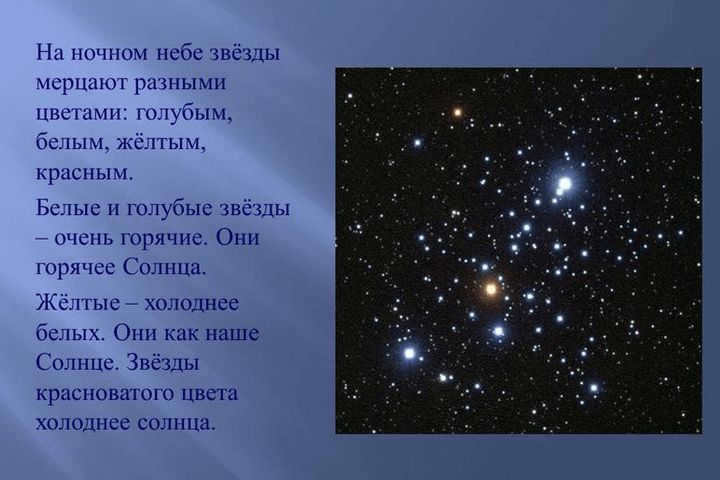
The lowest temperature stars appear red. If you heat up metal, you can witness this phenomenon of color change. Depending on the level of heat, the metal will transition from red to white when it reaches its highest temperature.
Scientists who study stars, known as astronomers, have discovered a way to determine the age of these celestial bodies based on their temperature and color. A star’s lifespan is limited. It begins with an explosion, during which it reaches its highest temperature and emits a white or blue light.
As the star’s energy reactions gradually diminish, its color shifts from yellowish to red, signaling the end of its life cycle. The color of our main source of light and life on Earth, the Sun, is currently a pale yellow. This indicates that the Sun is in its middle age, like a mature “lady” in her prime.
Moreover, our atmosphere is characterized by both heterogeneity in density and mobility. It experiences continuous movements, including the shifting of layers and the formation of various air mass swirls. As a result, it not only causes interruptions in the form of flickering rays of light.
In addition, its dynamic composition scatters and diffuses the luminescence, creating different spectra and refracting them. This process can be compared to the functioning of a curved lens, which constantly changes its curvature angle. Consequently, we perceive the vibrant stars in the sky through a vast and ever-shifting “lens”.
Why do planets not twinkle?
Contrary to the mysterious flickering of stars, planets emit a steady, constant glow. This is due to their unique characteristics and composition.
One distinguishing factor is their shape. Unlike stars, which appear as mere points of light, planets are observed as luminous disks with clear, defined edges. This is because planets are thought to be extinguished stars that have a denser composition, resulting in sharper contours.
So where does the light come from? Planets themselves do not emit light; instead, they reflect the rays of a nearby star, such as our Sun. Additionally, planets are much closer to the Earth’s surface compared to stars. These two factors, the reflection of light and proximity, prevent the planets from flickering and make them appear larger to us through the atmospheric “lens.”






